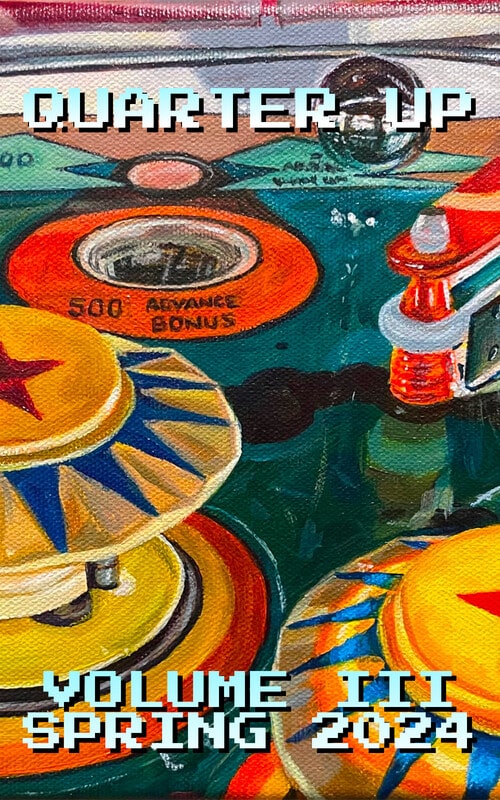

Bruce “Buffalo” Beck has passed away. Buffalo was the ‘resident color commentator’ for Quarter Up, writing about the places where life and pinball intersect.
I met Buffalo on Labor Day 2021, when I was visiting the small town of Cope, Colorado, 120 miles east of Denver. He ran the only store in town, Buffalo’s Last Stand, selling all manner of Buffalo memorabilia and an impressive inventory of classic horror and sf books.
He was also a writer, and when I mentioned my publishing company, he shared a manuscript with me. It was a collection of short stories about a hard-living repo man known only as The Captain. After reading through it in my car, I went back inside his store and told him I wanted to work with him.
Those short stories, Tales of a Metal Fisherman, became the first commercial release for Nantucket E-Books. When I started Quarter Up, and found out Buffalo was a certified pinball fanatic, I asked him to become a contributing writer, and he wrote at least one article for every issue published so far.
Buffalo loved pinball. He owned two machines at his store in Cope: Olympic Hockey (Williams, 1972), and Hokus Pokus (Bally, 1975). I know it meant the world to him to write about his memories of pinball, and to share them with Quarter Up readers. I hope you have enjoyed his insight, his humor, and his love of the game.
On a personal level, I am going to miss my friend. I cherished the opportunities to drive out onto the windswept plains to visit him at his store, editing each other’s work, comparing notes on writers like Harlan Ellison, Edward Gorey, and Robert Bloch. I was always sorry to leave and head back to Denver Metro.
If I have one positive note here, Buffalo’s enthusiasm for pinball means there’s more articles forthcoming. His article about whether or not pinball is a sport can be found in this issue. At least two more of his articles will be published in issues later this year.
In the meantime, if you have some quarters to spare, maybe head to your nearest arcade and play a round of pinball in Buffalo’s memory. I know he’d like that.
Nicholas Bernhard
Editor
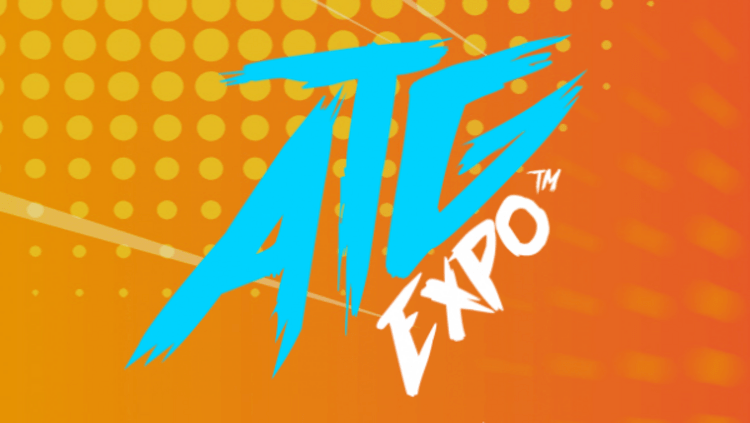
On an invitation from Hal Hawkins (founder of Retro World Series), my brother Sam and I trekked from our Houston suburb to the third-ever ATG Expo in Waco, Texas this January. We’ve previously competed in some of Hal’s competitive events and greatly appreciate what he does in the retro gaming community.
Over the bridge and past the frozen fountain in Downtown Waco, we made our way out of the chilly streets into the warm and comforting shutters of the convention center. As VIP’s, we came in a little early and got to see some of the vendors setting their booths up. The nearly 50 year-old building had gone over major renovations recently and felt as good as new. We were greeted by a Nintendo GameCube Demo Kiosk, a mannequin of Ninten (the protagonist from Mother 1) giving out the business cards, vendors of games from all eras and attentive convention staff.

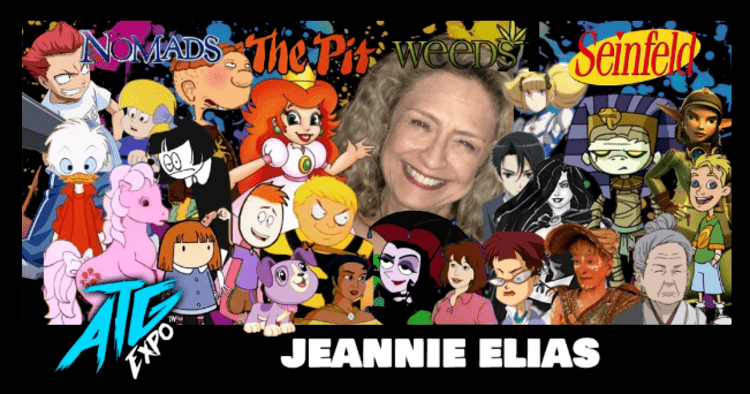
I was excited when we saw Jeannie Elias on the guest list. I admired her ever since I was younger. I loved the JumpStart computer games as a kid, she played many characters in them (she plays both the hero and villain of Jumpstart 3rd Grade: Mystery Mountain and nearly every female or child character in JumpStart 4th Grade: Haunted Mansion), she was in Super Mario Bros Super Show as Princess Peach (a fact the convention heavily touted), The Oblongs, Quack Pack, etc. She’s very proud of her work in the Nickelodeon show As Told by Ginger as Carl, Ginger’s mischievous little brother.
The thing about her career is that you can’t just pin her down to just one role because she’s done so much. With her, you’re always finding projects she was in. She’s also a very respected vocal coach. We spoke with her a few times at the Expo, we got her permission to film her panel. She had sides with her and invited some people in the audience to act out scenes. It was wonderful and fulfilling to meet her.
The main convention building has a retro gaming room with dozens of retro games consoles: Atari 2600, NES, Super NES, N64, GameCube, Sega Genesis, Dreamcast. A Smash 64 tournament was hosted by Retro World Series and an NES Tetris tournament was hosted by Heart of Texas.
In the entrance, there was a fleet of Virtual Boys. These days, you’re hard pressed to find a single one, so seeing several in one place is pretty darn special. Two of them were interlinked with a fan-created version of Street Fighter II: Champion Edition, complete with fightsticks. The images of the game were projected on the back wall for the adoring public to see.
Downstairs, a more modern roster of console games: PS5, Xbox Series X, Nintendo Switch and high end gaming PCs equipped with Tekken 7, Marvel vs. Capcom 3, Smash Bros Ultimate and the like fulfilled contemporary gaming needs. Sam challenged a local CBS media personality to Tekken 7… and won!
These competitions were some of the most popular events at the ATG Expo.

Across the table from the modern games were retro computing exhibits by Z-Tek and Texas Nerd House. Z-Tek had a LAN network to play Unreal Tournament, off of their modified eMacs and Apple II computers for the primordial Oregon Trail experience. Always a crowd pleaser, the eMacs were consistently occupied throughout the weekend.
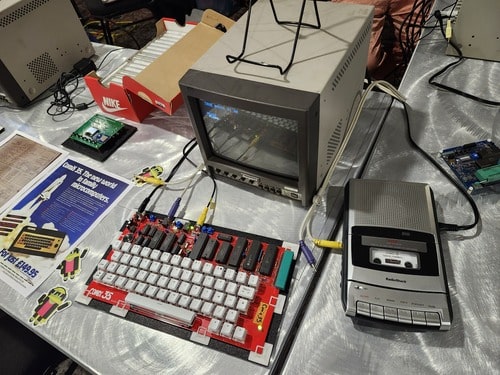
Stephen Wylie of Texas Nerd House had computers from all over the world at his table: 32-Bit Amigas, COMX-35, etc. But perhaps the most exciting curiosity of all was the Elektronika DVK-3! Wylie was generous enough to give us the historical rundown: this late ‘80’s Soviet computer is an authorized and functionally identical clone of the Elektronika 60, the computer that Alexey Pajitnov created Tetris for. Pajitnov originally wrote the Tetris program as a mathematical algorithm demonstration.
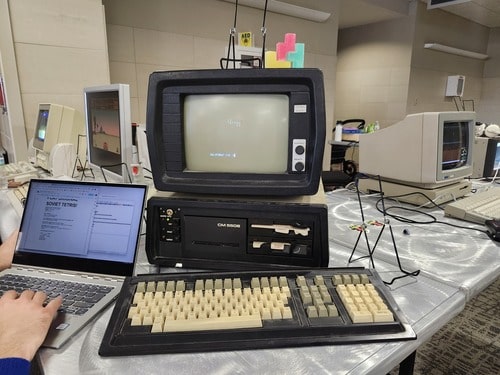
The original version of Tetris has no colors or sprites to speak of; like most of the old-school computer games, all of the game graphics are created using the equivalent of ASCII text. Seeing as how most of these computers were confiscated and/or destroyed after their service life, this was an extremely exciting find for all who enjoyed it! The game text was written entirely in Russian and the keyboard to play that game game a Cyrillic keyboard. For example, to start a new game session, you have to type in “Da” on a “Y/N?” prompt screen. The DVK served as a lesson in computer history and linguistics.
In the Main Stage Room, there were opportunities to try out independently-produced video games. We met with Josh and Roderick, two of the developers of Solar Purge, an overhead twin-stick shooting game for PC. Solar Purge borrows heavily from Total Carnage and Robotron but combines elements of classic dungeon crawlers, and even has some RPG elements. The game was a lot of fun, but very difficult and very challenging!
We also met with Nate Peters, creator of the homebrew NES game Doodle World which was inspired by his daughter’s crayon drawings. This 2D action platformer takes heavily after Super Mario Bros, but is much faster than that game. There’s five worlds to plow through. I struggled to make it to World 2; Sam made it to the very last stage.
ATG Expo has all the makings of an anime or comic book convention but also offers digital gaming, alternative sports, classic carnival games, computer exhibits, robotics, media guests, cosplayers and much, much more. There truly is something to do for everyone. Sam and I found it to be big enough in scale to be substantial but it was not intimidating in scope the way some of the larger conventions can be. This was a fantastic variety event for those with geeky interests who want to get hands-on with technology. Priding itself as a family-friendly affair for all ages to enjoy activities and games without fear, ATG Expo operates on the motto of “Rule Number 1: Have Fun!”
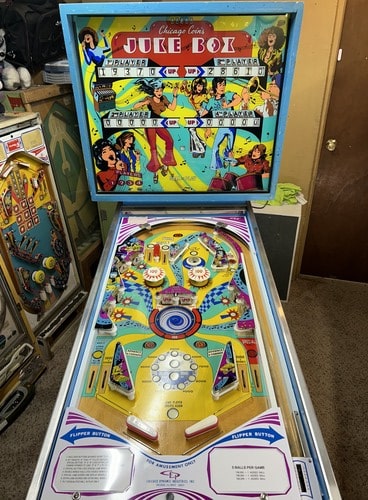
This is the last four-player pinball that Chicago Coin produced. All new rubbers, lights, ball, and game has been gone through 100%, and everything works as it should. It has very smooth gameplay and a relatively quick machine. Delivery is available for an extra fee.
Price: $1800
Contact: Steve 719-322-3411 or classamuse@icloud.com
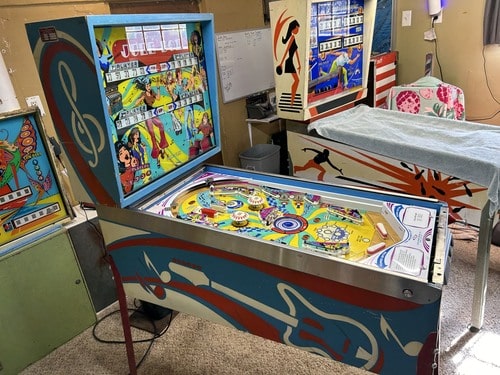
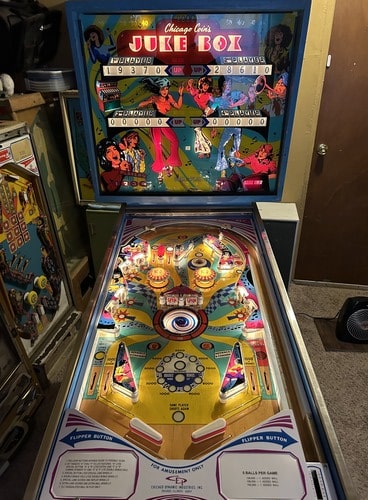
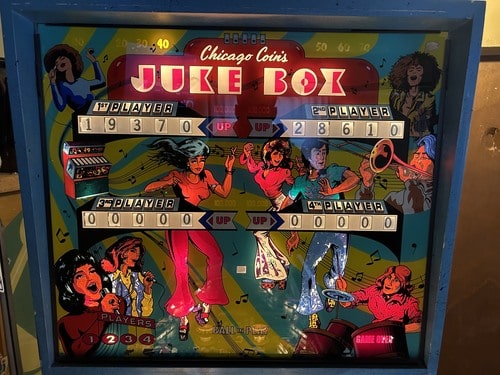
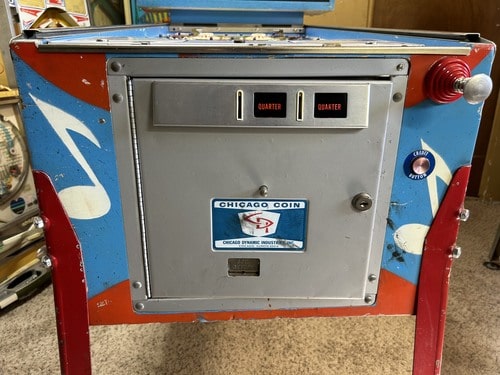
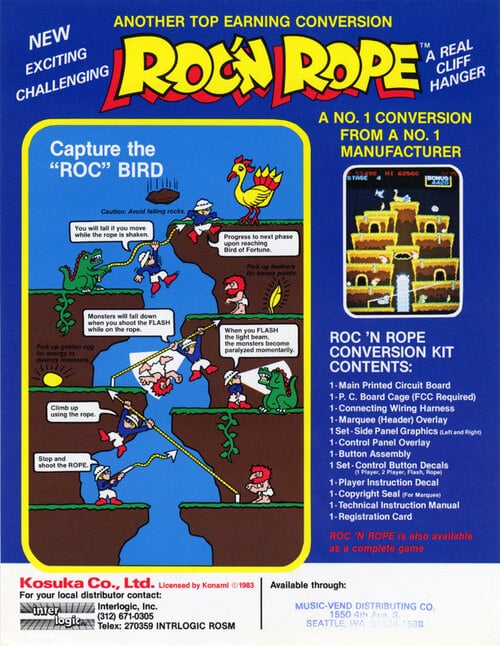
Inspiration comes in all shapes and sizes, even from the least likely candidates. Folks familiar with the development cycle are aware that Super Mario Bros. was directly inspired by Pac-Land, even with its odd control scheme and everything. Sometimes it’s simpler than that. There are times where a creator is inspired by their own creation to improve upon it moreso than on their first attempt. One such man is Tokuro Fujiwara. Hardly a slouch in terms of gamedev, he had a hand in creating a lot of gaming juggernauts, like Ghosts’n Goblins and Resident Evil, to the more obscure cult classics like Tomba! and Bionic Commando. What most people aren’t aware of, is that Bionic Commando is a spiritual successor to an earlier Fujiwara joint: Konami’s Roc’n Rope from 1983.
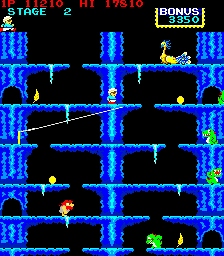
Roc’n Rope has you controlling an archaeologist to reach a phoenix bird at the top of a landscape. To do so, he is equipped with a flashlight and a harpoon. There are many enemies in the stage, such as dinosaurs and cavemennmart enough to climb the player’s ziplines. Not only can the archeologist stun the enemies with his flashlight, but he can also make the enemies fall to their deaths by making a new line as soon as they climb onto the current one on the stage. He can descend from platform to platform with various short vines and icicles strown across the levels. This leads to a variety of gameplay and scoring possibilities despite the simple setup.
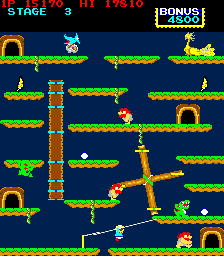
Even with practice, the harpoon can be awkward, especially when enemies are swarming the platform and you’re trying to find a quick escape. The archaeologist can also die from fall damage, and even a small drop can be deadly. This can lead to some rather unfair deaths if the player isn’t careful enough with their ascents from zipline to zipline. The Power Egg, the invincibility item, has too short a duration to be useful unless you’re in a real pinch.
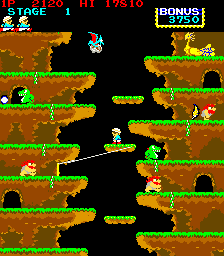
While one can see the intent behind the design, it was an idea that needed more time in the oven for it to really shine. Fujiwara seemed to realize that. Bionic Commando was an improvement, with a better harpoon gun mechanic than Roc’n Rope. Fujiwara stated: “Roc’n Rope had a lot of limitations due to the hardware of the time. I had quite a few ideas I’d been wanting to try piling up on the back burner.” Even Konami themselves seemed to have realized this, as the Japan-exclusive sequel Arumana no Kiseki, while still retaining the diagonal-only harpoon zipline movement, is a more traditional platformer and thus allows for more free movement. It also helped that the main hero had more traditional weapons than a simple flashlight to stun enemies.
Even besides the obvious example of Bionic Commando, many games bear influence from Roc’n Rope. Super Metroid, Super Castlevania IV, modern games like A Story About My Uncle and the Batman: Arkham games all owe their grappling guns to Roc’n Rope. Surprisingly, one title that comes to the minds of many retro gaming nerds isn’t inspired by it – the Umihara Kawase series. In an interview, Toshinobu Kondo claims that the idea of a fishing line grapple came to him in the prototyping phase of the original Umihara Kawase, and when they stumbled across it, they ran with it. Seemingly, he had never played Roc’n Rope or Bionic Commando at that point. Even the best ideas don’t just come from a single source.
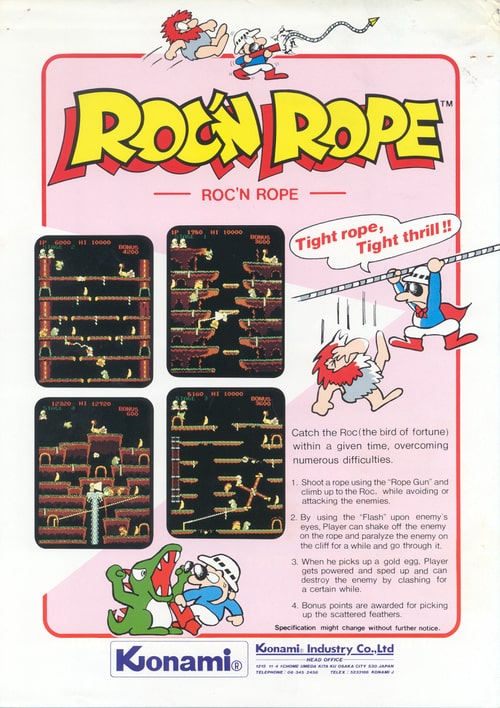
The lineage behind Roc’n Rope is an interesting one. Even if the game is a flawed but interesting attempt at furthering the platformer genre, its influence spans all the way to the present.
Sources:
https://glitterberri.com/tokuro-fujiwara/
https://shmuplations.com/sayonaraumihara/
https://flyers.arcade-museum.com/videogames/show/1399
https://flyers.arcade-museum.com/videogames/show/4257
https://flyers.arcade-museum.com/videogames/show/862
In Issue 5, Synamax wrote about his work to reverse-engineer the arcade classic Sinistar. It’s since become our most-discussed article yet. Readers were amazed (as I was) by the effort and dedication it takes to rebuild a game. The MAME and emulation communities were very impressed.
I wanted to take the time to share some of the feedback for Beware: I Live…
Editor.
That was a great read.
I’ll never forget my first experience with Sinistar. Late December, 1987, after the last day of school before Christmas break. 3rd grade, I was 9. I was gonna stay over at my best friend’s house for the first time, and we went to an arcade I hadn’t been to since I was around 5. It was massive, and they had some greats, particularly a sit-down Spy Hunter and environmental Discs of Tron. But I kept hearing this menacing yell and taunts. Eventually, I found Sinistar.
As you said, there was something very different about it. I went in thinking it was an Asteroids knockoff, but I was very, very wrong. The action was fast and Sinistar came out of nowhere, scaring the crap out of me every time. Also, the volume was absolutely cranked, adding to the fear factor. I was shaking and had no idea what I was doing, but I kept going back to that machine. I wanted that scare.
I know I played plenty of games, but the ones that stick out from that day are those three. Despite the arcade having a big side with older games, each of them would disappear between then and the time that the first TMNT game came out. And boy, that was an experience too.
/u/TravellingNotRunning
Very nice read, I love your dedication, keep on!
/u/SchwingSk
Great read! Crazy how passionate is he for [Sinistar]
/u/DarkReaper90
Awesome! I heard that original Sinistar Roar!
/u/TaiDavis
Played this bitch when it came out, but never just past the second spawn. Thanks for the blast from the past.
/u/oDDmON@lemmy.world
Sinistar was terrifying back in the day. Every time he came after me I’d start to panic, haha.
/u/xyzzy@lemm.ee
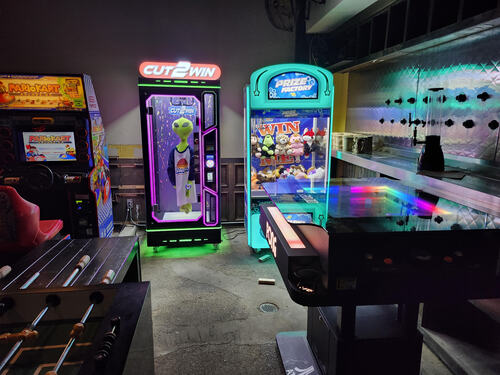
Contributor AT Gonzalez tipped us off to this bar-cade. Check it out next time Waco is on your driving plans through the Lone Star State.
Ed.
Besides its stash of adult beverages and bar food, Cricket’s Draft House & Grill in downtown Waco, Texas has quite the selection of arcade games. Foosball, shuffleboard, electro-mechnical favorites, retro-inspired crowd pleasers and modern titles. Pictured in these photos are Table Pong, Mario Kart Arcade GP, Skee-Ball, Cruis’n Blast and others.
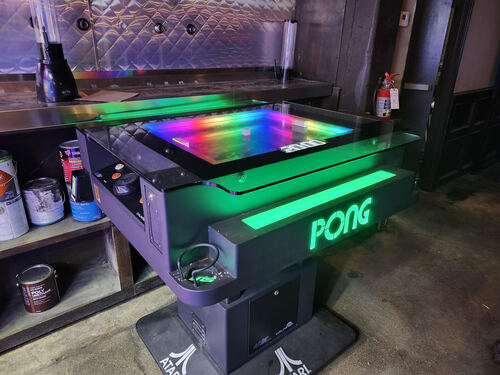
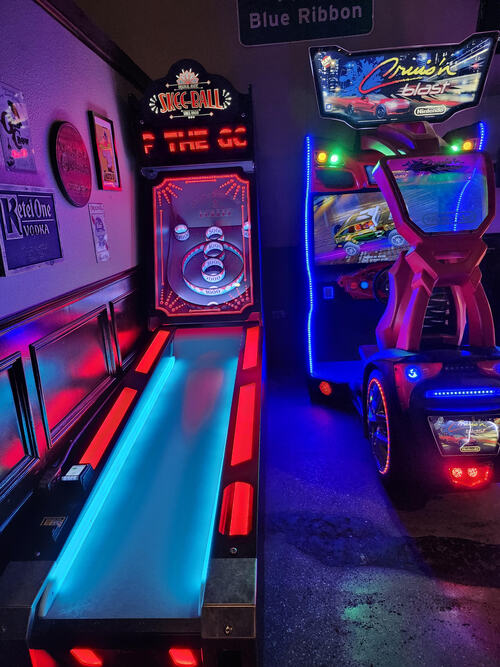
Now that is a valid question that deserves a response if not an answer, no? So, what constitutes a sport would be a valid query. Skiing is called a sport, as well as karate, baseball, football, track and field events, swimming, and bowling, to name a few. So why not pinball?
Sporting events take talent and wisdom: knowing what to do when a circumstance arises, expected or unexpected. When to swing the bat for the best response in baseball, when to dodge left or right in football, when to expend one’s physical energies for the best results. Knowledge and wisdom come from training and having an innate talent or knowledge of something.
And often times lots of money and time for the training.
Just like pinball. Especially the money part (lots of quarters).
And let’s not forget about the pain: pain from running for a long time to gain endurance or speed, pain of physical contact with the ‘enemy’, the body aches from training. Win/loss only happens with competition, and nobody wants to lose.
How many times have you won/beat the pinball machine?
Pinball playing is always competitive, even when you play by yourself. Just as in training, you try to beat your last, it only shows that you are in competition with yourself if not the record. If you are not satisfied, didn’t you just lose?
While talent and skill are requied in sports, pinball also needs luck, something not depended upon in sports. Pinball requires luck; the right bounce, a machine with good, working flippers, a not-too sensitive tilt, a leveled play area that doesn’t lean right or left. At home, all the above is fairly standard, commercially, anything can go wrong. Remember: defecation occurs (for those of you who are not politically correct: shit happens).
Then there is also the skill factor, and wisdom, which happens after repeatedly doing the same thing over and over again. The problem one may face is the X factor, that which shouldn’t happen but does. Defecation occurs. If you’re so perfect, you should have known the X factor before it happened.
The bad news is you ain’t perfect.
That’s why we’re here.
If Frisbee golf can be called a sport, if golf can be called a sport, if competitive walking can be called a sport, why not pinball? Hell, video games are called ‘sporting events’, as well as robotic wars (destroy the opponent), and boxing, and ultimate fighting. But is wrestling that is shown on TV a sport or just entertainment?
Pinball requires skill, talent, wisdom, and a lot of luck. Is the luck factor what keeps it from being declared a sport? What’s your opinion?
Long Beach Beer Lab
518 W. Willow St.
Long Beach, CA 90806
Long Beach Pinball League meets on Tuesdays at 7:30 PM, with Saturday Finals on May 11 at 1:30 PM. These are IFPA-sanctioned events. Email info*brewcades.com for more information.
MATCHPLAY TOURNAMENT
SUNDAY, MAY 28, 1:30 PM
Beer Thug
4400 Gage Ave.
City of Bell, CA 90201
Registration and warm-up from 12 Noon - 1 PM. Entry fee is $9 plus a $1 IFPA fee, plus coin-drop. Trophies and cash prizes for 1st and 2nd, gift cards for 3rd and 4th, with consolations.
Minimum one purchase at the bar.
Email Tom at info*brewcades.com for more information.
399 Main St.
Lyons, Colorado 80540
Spring Pinball League, Thursdays at 7:30 PM. $40 entry. All money goes to the prizepool for the end of the season tournament on May 30th. Suitable for all abilities!
5th Sunday Classic: Sunday June 30, 1 PM. Classic machines only. $20 entry fee.
Tournaments on the second Saturday of each month at 3 PM. $10 entry fee.
Women’s Tournaments on the third Saturday of each month at 3 PM. $10 entry fee, first-timers play free.
For more information, visit lyons
600 S. Center St.
Reno, Nevada 89501
Pin-Brawl Tournaments every Tuesday. Registration starts at 5 PM, tournament starts at 6:30 PM. $5 admission, with cash prizes for the top four places. Registration is limited to the first 48 people to register the day of the event. Limited to those 18 and older after 7 PM. This is an IFPA event.
For more information, visit reno
Nicholas Bernhard is the editor of Quarter Up. He is the developer of the Nantucket E-Books platform, and the Shanty markup language. With help from AT Gonzalez, he is building a directory of works by Harlan Ellison. For fun, he plays piano and bass guitar, and hikes. He may be reached at njb@
You may support his work at liberapay.com/nantucketebooks.
Originally from Pennsylvania, AT Gonzalez began his video game journey as a toddler playing Super NES. This opened up a whole new dimension of artistic expression for him. He began collecting games as a hobby a few years later down the line. His favorite game franchises are Mega Man, Mario, Metroid, Castlevania, F-Zero, Devil May Cry, Metal Gear, and plenty of others!
Currently based in Southeast Texas, he writes, makes short films, does studio photography, voice-over work, and audio production in his spare time. He may be reached at @At
You may support his work at ko-fi.com/atgonzalez.
Leland is an aspiring video game historian from North Carolina who specializes in documenting Taito and Namco games. Has written for various sites including Hardcore Gaming 101. He may be reached at tremirodomi.bluesky.social.
Buffalo was our resident color-commentator at Quarter Up, covering the places where life and pinball intersect. After spending most of his life in the San Joaquin Valley of California, he moved to Cope, Colorado on the eastern plains. There, he ran Buffalo’s Last Stand, where you could find all things bison-related, and eastern Colorado’s finest bookstore. He also baked a mean cookie.
In 2023, his novel Tales of a Metal Fisherman, filled with adventures in the life of a hard-living repo man, was published by Nantucket E-Books. A sample of the book may be read by clicking here, or you may order the e-book and/or paperback at nan
Buffalo passed away in April, 2024.
Chris Bordenca is an award winning painter and 80’s kid from New England who paints realistic portraits and still lifes of vintage toys and other oddities. He’s also an avid pinball fan. See more of his work including time lapse process videos at @chris _bordenca _art on Instagram. To buy original artwork and prints visit chrisbordenca.com.
This issue of Quarter Up is © 2024 Nantucket E-Books, LLC. Copyright for the articles contained in this newsletter is reserved by their respective authors.
Check out these past issues of Quarter Up. If you like what we do, consider subscribing to our RSS feed, or check out the official Quarter Up page on nantucket
Coverage of ATG Expo 2024 by AT Gonzalez. Games seen on the road. The reverse-engineering of Sinistar by Synamax. A recap of the year’s pinball games by AT Gonzalez. A special offer from color-commentator Buffalo. Cover art by Pencilforge.
The history of Nibbler by Leland Tursi. An interview with Steve Mitchell of Classic Amusements, by Nicholas Bernhard. A promo for the Houston Arcade Expo 2023 by AT Gonzalez. Color commentary: Buffalo explores pinball and the blues in Denmark. Cover art by Brad Albright.
The legal woes of Ms. Pac-Man by AT Gonzalez. Arcade games seen on summer road trips. The History of Chack’n Pop by Leland Tursi. Color commentary: memories of pinball in Modesto, CA by Buffalo. Cover art by Jeremy Mendiola.
Coverage of Houston Arcade Expo 2022 by AT Gonzalez. A recap of a panel with Brian Colin (Rampage) by AT Gonzalez. Reader Q ’n’ A. An entry-level guide to arcade sticks by Miller Burruss. Color commentary: “Long Live Pinball” by Buffalo. Cover art by Kris Vaswig.
A brief history of pinball by Miller Burruss. Pinball terms you need to know, by AT Gonzalez. The history and leak of Marble Madness II by Carlos Martinez. Ten Pinball Machines that Changed the Game: an interview with Pinball Hall of Fame owner Tim Arnold. A history of the arcade game Mystic Marathon by AT Gonzalez. A promo for Houston Arcade Expo 2022. Color commentary: Meditation, Zen, and the Art of Pinball by Buffalo. Cover art by Christopher Jacobs.
TEXT © Nantucket E-Books LLC for newsletter.
DOWNLOAD ENTIRE E-BOOKThis e-reader was developed by Nicholas Bernhard, © 2020 - 2023 Nantucket E-Books™ LLC. Nantucket E-Books™ is built on free software, which means it respects the freedom of the writers and readers using it. For more information, check out the software license page, the Help page, or e-mail me at njb@nan